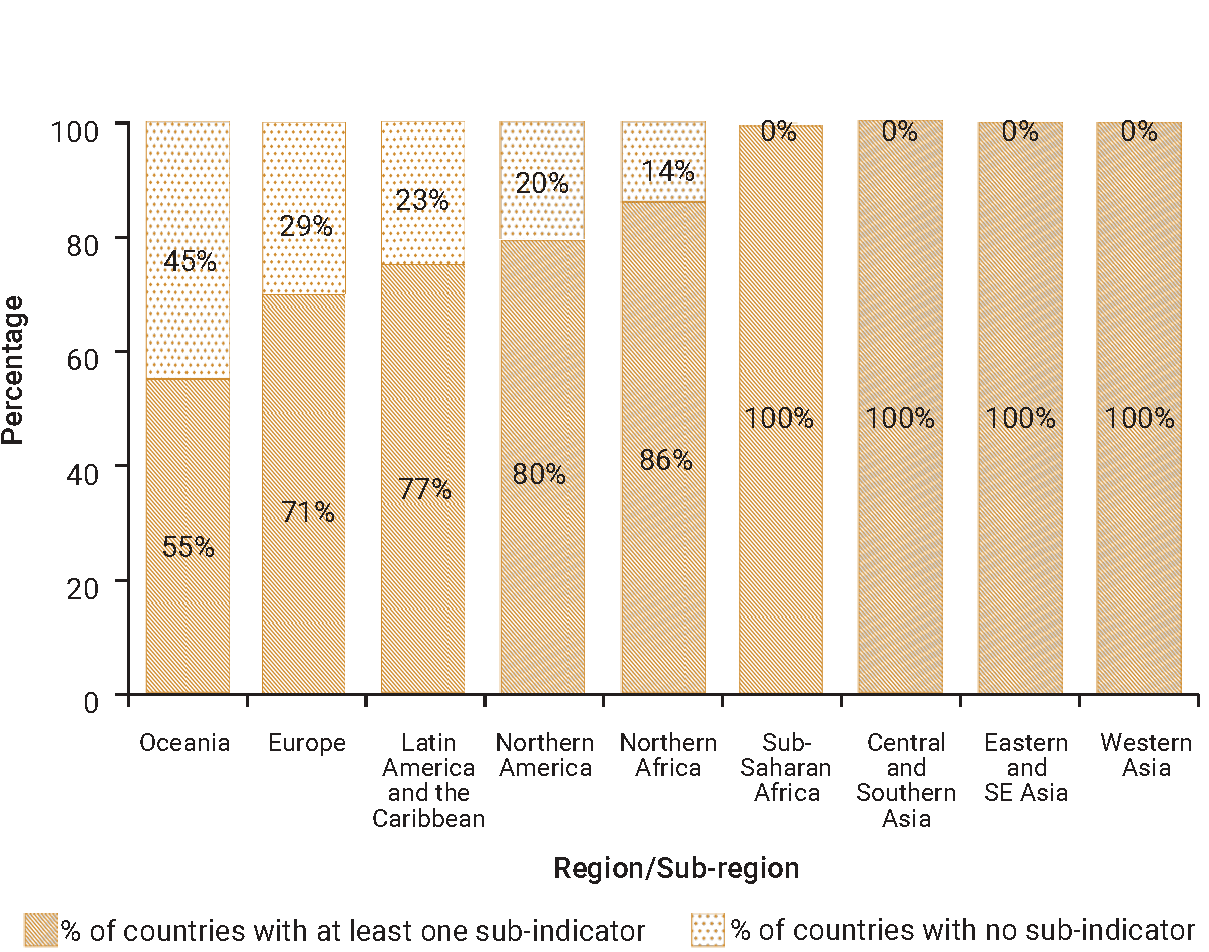SDG Indicator 7.3.1: Energy intensity measured in terms of primary energy and GDP
1. Key features and metadata
Definition: This indicator tracks the energy supplied to the economy per unit value of economic output, measured as Gross Domestic Product (GDP).
| Sub-indicator | Disaggregated by |
|---|---|
|
EG_EGY_PRIM Energy intensity level of primary energy (megajoules per constant 2017 purchasing power parity GDP) |
No current data disaggregation available. |
Sources of information: Data transmitted by relevant national administrations (e.g. Ministry of Energy or National Statistics Offices) to the International Energy Agency (IEA) and the United Nations Statistics Division (UNSD).
Related SDG Indicators: 9.4.1 (CO2 emission per unit of value added) and 13.2.2 (Total greenhouse gas emissions per year).
2. Data availability by region, SDG Global Database, as of 02 July 2025

3. Proposed disaggregation, links to policymaking and its impact
| Proposed disaggregation | Link to policymaking | Impact |
|---|---|---|
|
Energy intensity level of primary energy by final consumption sector (megajoules per constant 2017 purchasing power parity GDP)(UN 2018a; IEA et al 2023):
Applies to:
|
This disaggregation supports the enhancement of evidence-based policies. It responds to the need for improved information to empower decision-makers, economic actors and other stakeholders to design targeted measures aimed at improving energy intensity in sectors which are lagging and need support. This disaggregation is in line with the UN Global Roadmap for Accelerated SDG7 (UN 2021a). |
Measures such as the removal of the most inefficient equipment, devices and infrastructure, or the obligation for new buildings to meet ambitious energy-efficiency standards (building codes), will have to be promoted. These will also need the relevant incentives, funding support and regulatory frameworks as well as energy efficiency mainstreaming in all future strategies and investments (IEA et al. 2023). Overall, the increase in energy efficiency will be beneficial to the population and businesses by bringing down the cost of energy. It will also generate savings that can be allocated to other purposes and could improve human health, quality of life and the natural environment since pollution emissions related to energy use will drop per unit of added value. In addition, it will foster the development of new activities and jobs in the green economy sector (UN-DESA 2023a). |

